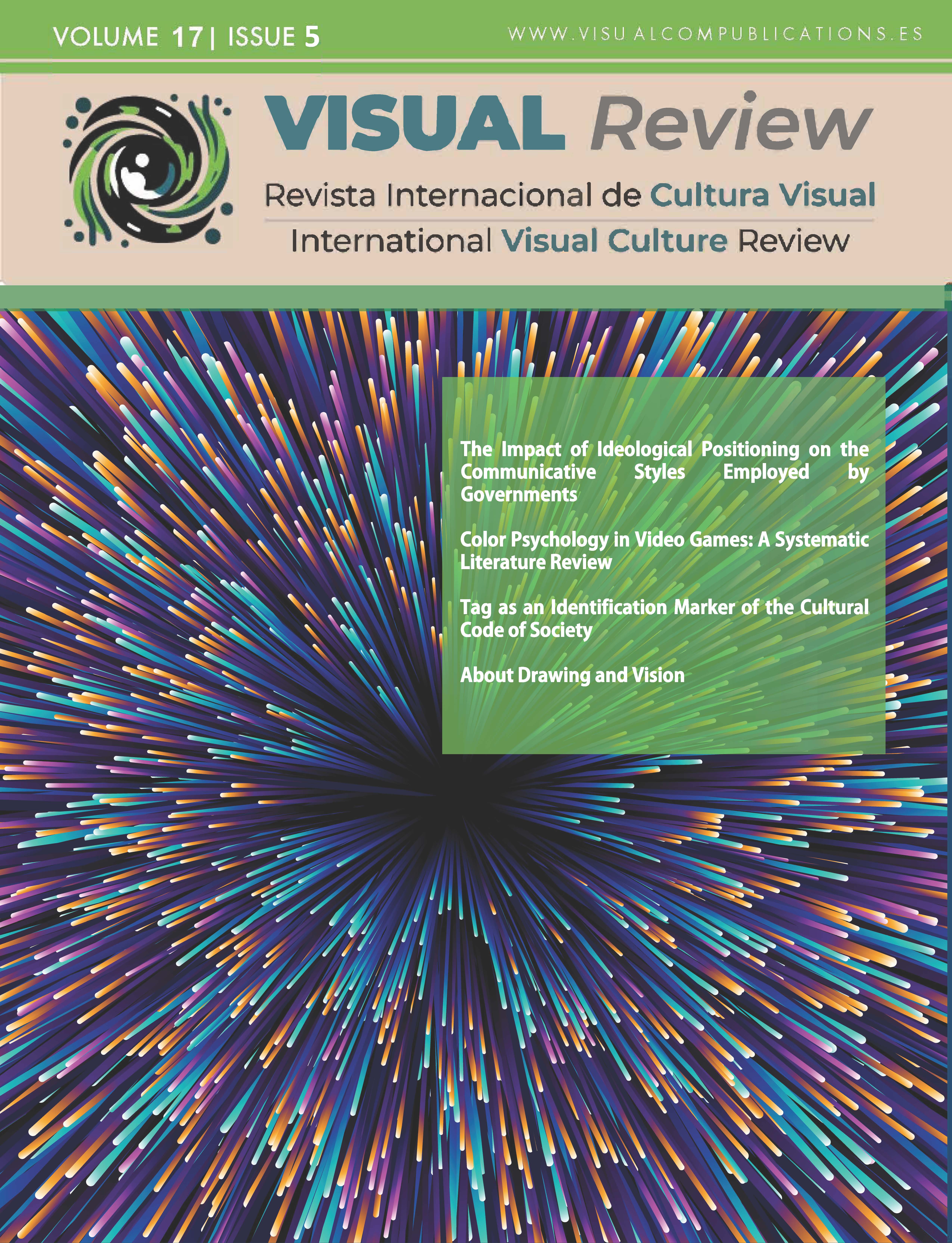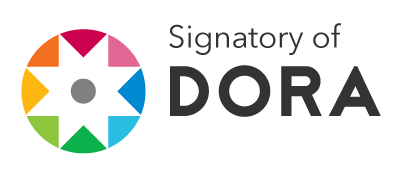Sex Education by Brands
A Case Study of Durex and Platanomelón on TikTok
DOI:
https://doi.org/10.62161/revvisual.v17.5866Keywords:
Branded Content, TikTok, Sex Education, Generation Z, Durex, PlatanomelónAbstract
Brands have identified the opportunity to position themselves as trusted authorities on topics like sexuality through the creation of engaging content, leading to the development of innovative strategies that merit close examination. A mixed-methods approach, combining the analysis of 272 videos published on TikTok by Durex Spain and Platanomelón with in-depth interviews with the professionals shaping these strategies, reveals a commitment to long-term actions centered on sexual health as a core editorial mission. By taking on this role, brands are not only enhancing their societal relevance but also offering valuable sex education to younger audiences, addressing a critical and underserved need.
Downloads
Global Statistics ℹ️
|
226
Views
|
147
Downloads
|
|
373
Total
|
|
References
Alías, M. (4 de abril de 2018). El “caso Manada” resucita el debate sobre la educación sexual para alumnos y jueces. Vozpópuli. https://bit.ly/3BaQK7E
Aguilera-Moyano J., Baños-González, M. & Ramírez-Perdiguero J. (2015). Branded entertainment: los contenidos de entretenimiento como herramienta de comunicación de marketing. Un estudio de su situación actual en España. Revista Latina de Comunicación Social, 70, 519-538. http://dx.doi.org/10.4185/RLCS-2015-1057 DOI: https://doi.org/10.4185/RLCS-2015-1057
Bartolomé, A. (13 de abril de 2021). España, a la cola de Europa en Educación sexual. Magisterio. https://bit.ly/3Y3A7nr
Berelson, B. (1952). Content analysis in communication research. Free Press. https://bit.ly/4eaTAYF
Castelló-Martínez, A. & del Pino Romero, C. (2015). La comunicación publicitaria con influencers. Revista Digital de Marketing Aplicado. REDMARKA, 14, I, 21-50. http://dx.doi.org/10.17979/redma.2015.01.014.4880 DOI: https://doi.org/10.17979/redma.2015.01.014.4880
Ciampaglia, G. L., Flammini, A. & Menczer, F. (2015). The production of information in the attention economy. Scientific Reports, 5:9452, 2015. http://dx.doi.org/10.1038/srep09452 DOI: https://doi.org/10.1038/srep09452
Edelman (Madrid, 17 de mayo de 2021). Los españoles confían, por primera vez, más en las empresas que en el Gobierno, medios y ONG 'S. Trust Barometer. [Nota de prensa]. https://bit.ly/4di71oH
Escalada, S. M. (2021). Estrategias de branding y marketing para crear engagement en el ecosistema digital: estudio de caso: Marca Platanomelón. En Plataformas, consumo mediático y nuevas realidades digitales: hacia una perspectiva integradora (pp. 650-671). Dykinson.
Estéfano Sancho, M. & Iranzo-Cabrera, M. (2024). La educomunicación sexual en medios españoles. Análisis de la cobertura mediática del consentimiento en Instagram y TikTok. ICONO 14. Revista Científica De Comunicación Y Tecnologías Emergentes, 22(2): e2155. http://dx.doi.org/10.7195/ri14.v22i2.2155 DOI: https://doi.org/10.7195/ri14.v22i2.2155
Fowler, L.R., Schoen, L., Smith, H.S. & Morain, S.R. (2022). Sex Education on TikTok: A Content Analysis of Themes. Health Promotion Practice, 23(5), 739-742. http://dx.doi.org/10.1177/15248399211031536 DOI: https://doi.org/10.1177/15248399211031536
Fundación y Sociedad Española de Contracepción. (2019). Estudio sobre sexualidad y anticoncepción: jóvenes españoles. https://bit.ly/4edjR8X
Gaitán-Moya, J. & Piñuel Raigada, J. (1998). Técnicas de investigación en comunicación social, elaboración y registro de datos. Editorial Síntesis.
Gálvez, S., López, N., Ortiz, E., Taborda, D. & Valderrama, M. (2021). Marcas humanas. Una mirada desde el consumidor. https://bit.ly/3zu1QE3
Giraldo-Luque, S. & Fernández-Rovira, C. (2020). Redes sociales y consumo digital en jóvenes universitarios: economía de la atención y oligopolios de la comunicación en el siglo XXI. Profesional de la Información, 29(5). http://dx.doi.org/10.3145/epi.2020.sep.28 DOI: https://doi.org/10.3145/epi.2020.sep.28
Jaramillo, C. (2021). Análisis de los contenidos con presencia de marca en la prensa digital española. Estudio de caso: Elpais.com 2019. Doxa Comunicación, 32, 345-379. https://doi.org/10.31921/doxacom.n32a17 DOI: https://doi.org/10.31921/doxacom.n32a17
Kim, Y. (2017). Consumer Responses to the Food Industry’s Proactive and Passive Environmental CSR, Factoring in Price as CSR Tradeoff. Journal Business Ethics 140, 307–321. http://dx.doi.org/10.1007/s10551-015-2671-8 DOI: https://doi.org/10.1007/s10551-015-2671-8
Mejía-Giraldo, J. (2019). Propósitos organizacionales como alternativa para los problemas que proponen los modelos canvas y lean canvas. Innovar, 29(72), 31-40. https://doi.org/10.15446/innovar.v29n72.77891 DOI: https://doi.org/10.15446/innovar.v29n72.77891
Middleton, S. (2022). For You? Using TikTok® to Teach Key Content. Management Teaching Review, 7(3), 226–235. http://dx.doi.org/10.1177/23792981221096871 DOI: https://doi.org/10.1177/23792981221096871
Ministerio de Sanidad. (Madrid, 20 de agosto de 2019). El Ministerio de Sanidad, Consumo y Bienestar Social dona 100.000 kits con preservativos para su distribución en conciertos y festivales de música. [Nota de prensa]. https://bit.ly/4ecNhUq
Miotto, G. & Payne, G. (2019). Branded content: una nueva apuesta para el New York Times. adComunica. Revista Científica de Estrategias, Tendencias e Innovación en Comunicación 17, 23-39. http://dx.doi.org/10.6035/2174-0992.2019.17.3 DOI: https://doi.org/10.6035/2174-0992.2019.17.3
Muniz, F., Guzmán, F., Paswan, A.K. & Crawford, H.J. (2019), The immediate effect of corporate social responsibility on consumer-based brand equity. Journal of Product & Brand Management, 28(7), 864-879. http://dx.doi.org/10.1108/JPBM-09-2018-2016 DOI: https://doi.org/10.1108/JPBM-09-2018-2016
Neuendorf, K. A. (2002). The Content Analysis Guidebook. Thousand Oaks, CA: Sage Publications
Omar, B. & Dequan, W. (2020). Watch, Share or Create: The Influence of Personality Traits and User Motivation on TikTok Mobile Video Usage. iJIM, 14(4), 121-127. http://dx.doi.org/10.3991/ijim.v14i04.12429 DOI: https://doi.org/10.3991/ijim.v14i04.12429
OMS. (s.f) Salud Sexual. https://bit.ly/4dmlwHU
Pulizzi, J. (2021). Start a Content-First Business, Build a Massive Audience and Become Radically Successful. Content Inc., Second Edition. McGraw-Hill Education eBooks.
Ramos-Méndez, D. & Ortega-Mohedano, F. (2017). La revolución en los hábitos de uso y consumo de vídeo en teléfonos inteligentes entre usuarios millennials, la encrucijada revelada. Revista Latina de Comunicación Social, 72, 704-718. https://doi.org/10.4185/RLCS-2017-1187 DOI: https://doi.org/10.4185/RLCS-2017-1187
Reason Why. (09 de mayo de 2022). Durex hace pedagogía sobre salud sexual en TikTok con la plataforma “Hay tema”. Reason Why. https://bit.ly/4di6MtN
Selva-Ruiz, D. & Caro-Castaño, L. (2016). Uso de datos en creatividad publicitaria: el caso de Art, Copy & Code de Google. El Profesional de la Información, 25(4), 642-651. http://dx.doi.org/10.3145/epi.2016.jul.14 DOI: https://doi.org/10.3145/epi.2016.jul.14
Servera, D. & Piqueras, L. (2019). The effects of corporate social responsibility on consumer loyalty through consumer perceived value. Economic Research-Ekonomska Istraživanja, 32, 66-84. https://doi.org/10.1080/1331677X.2018.1547202 DOI: https://doi.org/10.1080/1331677X.2018.1547202
Silverio, Mario. (25 de abril de 2024). Estadísticas y usuarios activos de TikTok (2024). PrimeWeb. https://bit.ly/47Af2E2
Statista Research Department. (2022). La sexualidad en España - Datos estadísticos. https://bit.ly/3ZzwE0N
Toledano, F., Selva, D. & Díaz-Masa, J. (2021). La transformación digital de la comunicación: nuevas fórmulas de creación, producción y distribución de contenidos de marca. En J. P. Olivares & R. Gago (Coords.), El Branded Content en la comunicación posdigital: estructuras, aplicaciones y casos de éxito (pp. 31-54). Valencia: Tirant-Lo Blanch.
UNESCO. (2009). International Technical Guidance on Sexuality Education: An evidence-informed approach for schools, teachers and health educators. The Rationale for Sexuality Education, I, 123. Scientific and Cultural Organization. https://bit.ly/4eiGsRC
UNESCO. (2018). International Technical Guidance on Sexuality Education: An evidence-informed approach. United Nations Educational, Scientific and Cultural Organization. ISBN 978-92-3-100259-5 DOI: https://doi.org/10.54675/UQRM6395
Vilches, L. (Coord.) (2011). La investigación en comunicación. Métodos y técnicas en la era digital. Barcelona: Gedisa Editorial.
WHO Regional Office for Europe y Federal Centre for Health Education. (2010). Standards for sexuality education in Europe. A framework for policy makers, educational and health authorities and specialists. Cologne: BZgA.
Downloads
Published
How to Cite
Issue
Section
License
Copyright (c) 2025 Authors retain copyright and transfer to the journal the right of first publication and publishing rights

This work is licensed under a Creative Commons Attribution-NoDerivatives 4.0 International License.
Those authors who publish in this journal accept the following terms:
-
Authors retain copyright.
-
Authors transfer to the journal the right of first publication. The journal also owns the publishing rights.
-
All published contents are governed by an Attribution-NoDerivatives 4.0 International License.
Access the informative version and legal text of the license. By virtue of this, third parties are allowed to use what is published as long as they mention the authorship of the work and the first publication in this journal. If you transform the material, you may not distribute the modified work. -
Authors may make other independent and additional contractual arrangements for non-exclusive distribution of the version of the article published in this journal (e.g., inclusion in an institutional repository or publication in a book) as long as they clearly indicate that the work was first published in this journal.
- Authors are allowed and recommended to publish their work on the Internet (for example on institutional and personal websites), following the publication of, and referencing the journal, as this could lead to constructive exchanges and a more extensive and quick circulation of published works (see The Effect of Open Access).













